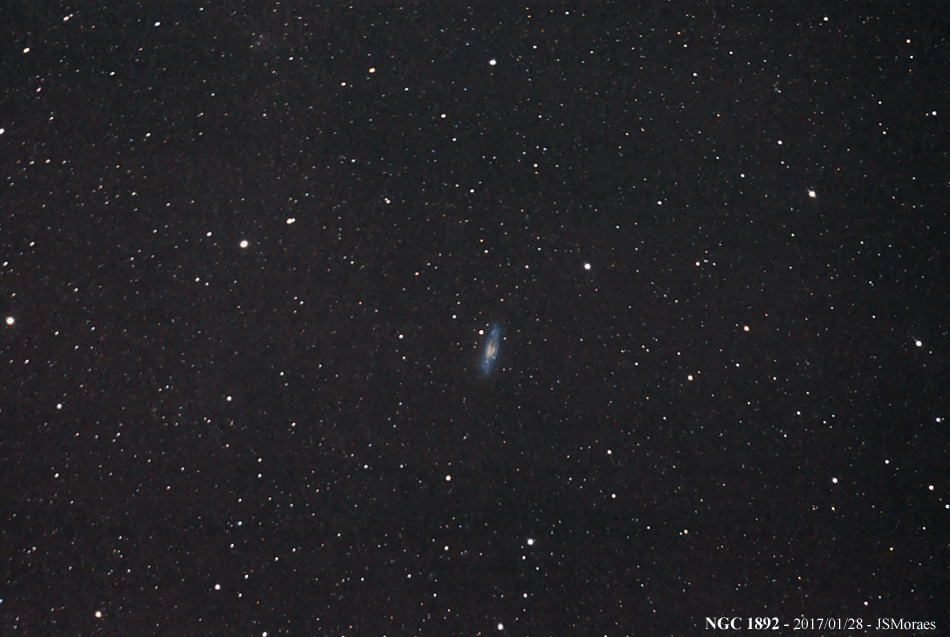NGC 1892
Postado por

 jsmoraes
–
jsmoraes
–
 jsmoraes
–
jsmoraes
–

Galáxia espiral próxima de LMC, com magnitude 12. Constelação de Dourado.
GSO 305 mm - Canon T3 - 19 x 2 min (38 min) - ISO 1600 - OAG - Skyglow filter - Coma corrector


Comparação com foto Hubble:

Imagem Hubble:

nota: a imagem de Carnegies-Irvine no site https://cgs.obs.carnegiescience.edu/CGS/object_html_pages/NGC1892.html aparenta apresentar uma Super Nova na galáxia.

GSO 305 mm - Canon T3 - 19 x 2 min (38 min) - ISO 1600 - OAG - Skyglow filter - Coma corrector


Comparação com foto Hubble:

Imagem Hubble:

nota: a imagem de Carnegies-Irvine no site https://cgs.obs.carnegiescience.edu/CGS/object_html_pages/NGC1892.html aparenta apresentar uma Super Nova na galáxia.

| Free forum by Nabble | Nabble® |
4 Comentários
Re: NGC 1892
Re: NGC 1892
Re: NGC 1892
Re: NGC 1892